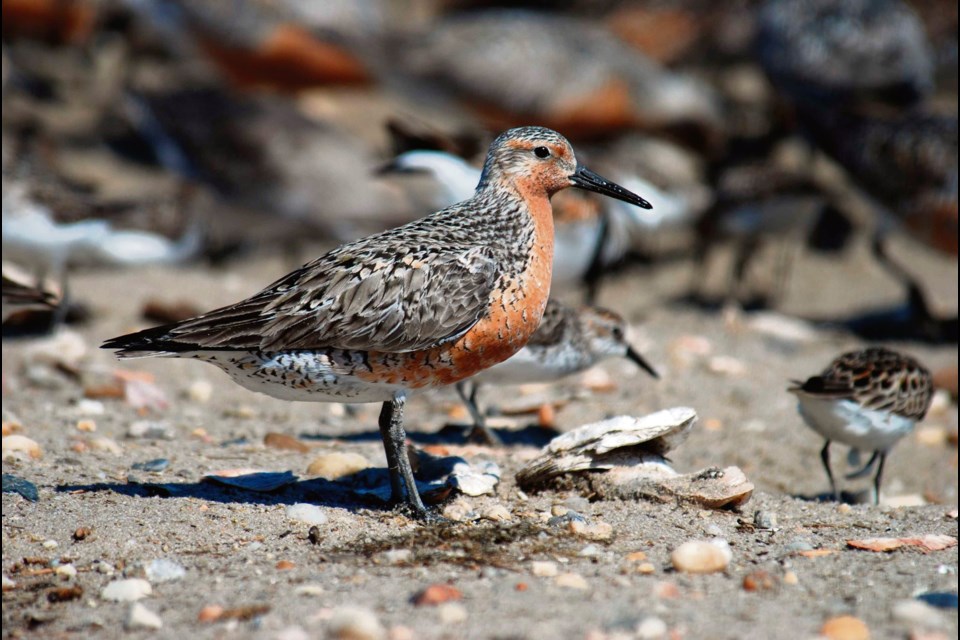Imagine a wading bird -- a sandpiper, let’s say, a common enough sight in Manitoba. Now imagine it wearing an antenna on its back, sending silent signals through the air.
As it migrates, those radio frequency signals can be picked up by tracking stations all over North, Central and South America, including two new towers erected near Oak Lake this summer as part of a conservation effort focused on shorebirds.
The Nature Conservancy of Canada (NCC) is monitoring shorebirds because, for unknown reasons, their numbers are in steep decline. The “State of the Birds” study released in June found that Canada has lost up to 60 per cent of its shorebirds since 1970.
Josh Dillabough is a key figure in the NCC project as the Manitoba coordinator. He recently went out to check on the Oak Lake towers and identify some of the shorebirds that nest (or stop to rest) in the area.
“One of the reasons for the towers,” Dillabough explains, “is to help the greater academic community to help shorebirds in the long run, to protect areas along their migration routes. They need food along their route. People flushing birds, drainage, changes to the landscape, it all changes how they migrate.”
For instance, excess drainage can dry out the marshy landscape they depend on. But in times of flood, mudflats near the shore shrink or disappear under water making an important feeding ground inaccessible to the birds.
Dillabough spots shorebirds feeding in a marshy pond near the road, a group of phalaropes. They're easy to identify as they spin in rapid, tight circles on the water.
(See a video of these remarkable birds spin-feeding here: https://vimeo.com/231289832 )
Then there’s the red knot, a shorebird with one of the longest migrations, flying twice a year between the high Arctic and Tierra del Fuego at the bottom of Argentina.
Other shorebird species seen in Manitoba are plovers, avocets, herons, egrets, ibis, and certain gulls, most of whose numbers are dropping.
That’s why, says Dillabough, becoming a part of the larger network of hundreds of tracking towers across the western hemisphere is important.
“Any data we get on a species here is valuable data because it means somebody is doing a study where they’ve implanted a radio frequency tag on a bird that can be picked up by these units. That information is 100 per cent useful.”
For example, he says, a researcher from Oklahoma arrived here in July to study the migration patterns of certain wading birds known to nest in the Oak Lake area. She will attach little backpacks to the birds that provide nine different measurements that can be cross-referenced with data coming from the other towers along the bird’s migration path. That information can guide efforts to protect the habitats they need. (The tiny transmitters are also attached to bats and large insects, like dragonflies.)
Dillabough is hoping the NCC’s tracking towers in southwestern Manitoba (two at Oak Lake and one at Whitewater Lake) will attract more researchers and university students to continue studying shorebird populations.
But he says there are things average folks can also do to help:
- Avoid areas where groups of migrating birds stop to feed. Every time they are flushed out and have to resettle consumes valuable energy they need for their journeys.
- Leash your dog at the beach so it doesn’t chase shorebirds.
- Clean up garbage along wetlands, beaches and shorelines.
- Consider a donation to support the non-profit NCC’s conservation efforts.




